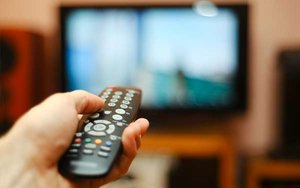Majority Of TV Consumers Want 'Skinny' Package, Less Than 20 Channels
- by Wayne Friedman , March 22, 2016
 A
strong majority of TV consumers want to pick the channels for their pay TV packages -- and to pay around $40 per month.
A
strong majority of TV consumers want to pick the channels for their pay TV packages -- and to pay around $40 per month. A new survey by Digitalsmiths, a TiVo-owned discovery/search TV company, says 73.6% of respondents want “skinny” TV packages -- around 18.4 channels -- and pay an average of $40.56 a month.
Typical large-pay TV packages can include 100 to 200 channels and can cost consumers anywhere from $80 to $120 a month.
The top channels, according to the survey, to be included in the smaller packages: Discovery Channel (61.3%); ABC (59.9%); CBS (56.8%); History (55.9%); and NBC (55.3%). The next five are A&E (52.2%); Nat Geo (49.4%); Fox (48.4%); HBO (48.0%) and PBS (46.3%).
Other channels getting high votes are Comedy Central, AMC, Food Network, The Weather Channel, CNN, Animal Planet, TBS, FX, TLC and TNT.
advertisement
advertisement
But since many skinny pay TV providers don’t offer individual channel selection, DigitalSmiths also surveyed respondents for different packages of some 15 channels -- some with more traditional-skewing networks and others with a focus on sports, while still others emphasize smaller channels.
The top package here, tallying a 35.4% score, is a group of channels priced at $35 a month that focuses mostly on young viewers, as well as a few older-skewing networks: Nickelodeon, Fuse, Cartoon Network, VH1, BET, Fusion, Univision, WE TV, Ovation TV, and Esquire Network.
The second-best package, at 26%, included older-skewing networks and is priced at $39 a month: TBS, USA Network, FX, Discovery, Fox, AMC, CBS, and The Weather Channel.
Digitalsmiths' survey of 3,120 consumers 18 years and older in the fourth quarter of 2015 was produced by a third-party survey service.



Unfortunately, those who want "skinny packages" at about $2 per month per channel aren't going to be able to dictate exactly what is available, nor its pricing.This type of study ignores the fact that many of the more selective cable programming services as well as a fair number of the larger oner would simply not be viable if the respondents had their way. It would be a tad more revealing if the researchers asked their respondents to actually pick those 18 channels they would want, including their local broadcast network affiliates to receive both network and local ( news, prime access ) content, plus independents to get the same mix of primetime Fox/CW fare, plus local news and syndicated shows. Also to be considered would be PBS outlets as well as a host of cable channels. Forced to make such selections on a channel-specific basis, in the light of the kinds of programs each channel offers, many respondents would soon be in a quandry, wanting a lot more than 18 channels, after all.
Ed no one watches 18 channels....
Respondents want VOD which is the opposite of payTV....
PayTV bundle is a legacy business model built on decades of corporate lobbying in the form of Must Carry and Retransmission fees....
No free market in that.
I'd love to see that questionnaire! It's pretty obvious that the tier or big bundle approach has a limited lifespace and that sub/retrans fees can not continue to escalate , even if broadcast and cable do look to those revenue streams to offset other declines. Wouldn't you say its more of a question of leverage? Right now the video providers, rather than cord-cutters or shavers,seem to retain it. Who's going to blink first, the providers or the cable systems? Fragmentation is here to stay.
I suffered a phone survey by an unbundler once... It was miserable - walking through channel by channel choosing or rejecting.
As a consumer, I'm a confirmed believer in rich bundles.
But also, it was clear that this kind of surveying required far more of me as respondent than I had patience for. So this research starts as suspect because it appears they attempted to dig into incredible detail. In research of that detail, every question still gets answered. But the answers are bunkum because the consumer is so frustrated they just really don't care to dig deep to give real answers.
I call "bullshit" on this survey. There is NO WAY that ESPN is not among the top 20 channels wanted by consumers. I would think it's a top five at least, but no way it's not a top ten. But not in the top twenty? Did they survey only women?
"Apps are the future of television. Think about it. On your mobile devices and computers, you already use apps such as Netflix, Hulu, WatchESPN, and iTunes to watch TV shows. And that’s exactly where TV in the living room is headed. Apps have liberated television. They allow you to make individual choices about what you want to watch. And when and where you want to watch it."
— Apple